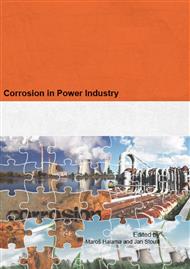p.23
p.31
p.41
p.49
p.59
p.63
p.67
p.77
p.83
Influence of Anodic Oxidation on the Polarization Resistance of Ti6Al4V Alloy after Shot Peening
Abstract:
Ti6Al4V titanium alloy is widely used for industrial and medical applications. Several techniques of surface treatment are used to improve their mechanical, fatigue or corrosion properties like shot peening or anodic oxidation. The effect of these techniques combination on corrosion resistance of the base material was examined in this study. For this purpose, electrochemical impedance spectroscopy tests were performed in 0.1M NaCl solution. Shot peening was carried out using ceramic balls Z850 (Φ 850 μm) at the Almen intensity of 0.13 mmA. Anodic oxidation process was performed on ground and shot peened surface in 7% H2SO4 acid solution at constant used voltage of 65 V. Significant improvement of corrosion resistance by the surface treatment of Ti6Al4V alloy by shot peening with following anodic oxidation was observed however the improvement was lower when compared to surface treated only by anodic oxidation.
Info:
Periodical:
Pages:
59-62
Citation:
Online since:
December 2014
Authors:
Keywords:
Price:
Сopyright:
© 2015 Trans Tech Publications Ltd. All Rights Reserved
Share:
Citation:


